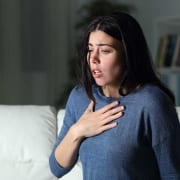Why Cholesterol Levels Are Not the Best Predictor of Heart Disease
Individuals with higher-than-normal cholesterol levels are commonly prescribed statins in the hope of reducing their risk of heart disease or stroke. Yet, medical research indicates that statins actually have very limited usefulness in preventing heart disease unless the patient already has a personal history of the disease. This may be due, in part, to the fact that cholesterol is just one of a series of factors that put an individual at risk.
Furthermore, statin use over a prolonged period has been linked to an increased risk of Type II Diabetes. A study published in spring 2015 in the Journal of General Internal Medicine, cited this connection among healthy adults at baseline.
In the study – Statins and New-Onset Diabetes Mellitus and Diabetic Complications: A Retrospective Cohort Study of US Healthy Adults – researchers looked at a pool of 25,970 adult patients defined for the purposes of the study as “healthy” (i.e., free of heart disease, diabetes, and other severe chronic diseases). From this pool, 3351 statin users and 3351 non-users were propensity score-matched based on 42 baseline characteristics. The results were striking: statin users were almost twice as likely to develop diabetes, more than twice as likely to develop diabetic complications, and slightly more likely to become overweight/obese than their counterparts.
Recent studies continue to confirm the link:
Statins and the potential for higher diabetes mellitus risk
Statin users have an elevated risk of dysglycemia and new-onset-diabetes
Inflammation as a predictor of heart disease
Inflammation is a much more reliable predictor of one’s risk of developing heart disease than cholesterol and is easily measured by looking at a patient’s C-reactive protein (CRP) levels. What’s also heartening (pun intended) is that inflammation can be reduced dramatically by making modest lifestyle changes.
Statins do have a place in treating heart disease, but before medical practitioners prescribe a statin whose side-effects can range from an increased risk of developing Type II Diabetes to muscle pain or weakness, headaches, sore throat, sinusitis, nausea, and liver problems, it makes sense to first look at alternative, natural, and inexpensive ways of lowering inflammation in the body.
Here are 5 steps that you can take immediately to reduce inflammation in your body (and reduce your risk of heart attack and stroke):
- If you smoke, stop. Smoking unquestionably raises the inflammatory factors in the body and dramatically increases your risk, not only for heart attack and stroke but also for cancers.
- Eliminate inflammatory foods and add Omega-3’s to your diet. An anti-inflammatory diet is one that eliminates fatty and fried foods (especially foods containing trans fats and saturated fats) and includes plenty of fruits, vegetables, and whole grains. Omega-3 fatty acids, found in a wide variety of fish, olive oil, and nuts, help reduce inflammation in the body and are also effective in treating arthritis, depression, ADD, and ADHD.
- Exercise regularly. Regular exercise (ideally 10,000 steps per day if it is possible) has been shown to reduce inflammation in the body and with it, the risk of developing a great number of diseases. If you have limited options right now as many of us do, think creatively. Exercise could be doing your own stairs throughout the day, yoga, bodyweight exercises, even your own living room dance party!
- Meditate daily. Meditation helps reduce inflammation by improving the regulation of the hypothalamic-pituitary-adrenal axis. This axis is responsible for regulating the blood pressure and heart rate, as well as the body’s production of cortisone, an anti-inflammatory hormone.
- Make every effort to improve your sleep. More than ever people are having difficulty falling asleep and staying asleep. A healthy & regular nightly sleep pattern allows your heart rate to slow down and your blood pressure to drop, reducing stress on the heart. Lack of sleep compromises the normal functioning of your immune system, and long-term sleep deprivation causes your body and brain to be in a chronic state of inflammation. This not only increases your risk of heart disease and stroke, but can also increase the risk of obesity, chronic pain, ADD, depression, and anxiety.
We are here for you, and we want to help.
Our goal is to return you to optimal health as soon as possible. To schedule an appointment please call: 703-532-4892 x2









